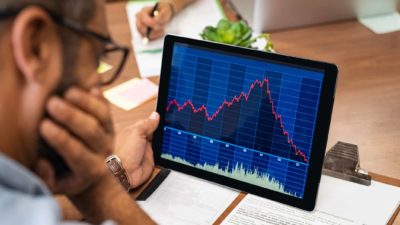Much of the discussion regarding the government's response to this coronavirus-induced economic crash we are witnessing has revolved around what measures the Reserve Bank of Australia (RBA) is implementing.
Yes, the government is still beefing up its substantial economic stimulus response to the crisis with record unemployment benefits, support payments to businesses and $750 cheques to welfare recipients.
But that only forms one half of the total government response (otherwise known as fiscal policy). Monetary policy (which is run by the RBA) is still being rolled out as we speak. Interest rates are at a new record low of 0.25% after the RBA's emergency meeting last month and may even be cut again to zero tomorrow when the RBA holds its scheduled April meeting.
On top of this, the RBA has made it clear it is now participating in what's formally known as 'unconventional monetary policy', which in turn is informally known as 'money printing'.
Is 'unconventional' monetary policy just money printing?
Sort of. Here in Australia (and unlike the US, Japan and Europe), the RBA has never before used any kind of policy that could be described as 'money printing'. Most 'major currency' countries have been undertaking quantitative easing (QE) programs with varying degrees of vigour since the GFC hit over a decade ago.
Whilst the RBA does not describe what it is currently doing as QE, it does admit that it is now trying to 'flatten' bond yields with price controls – meaning it will start buying government bonds when the yields get too high.
How will it buy the bonds? With new money. Money that didn't exist before and what critics would call 'printed money'.
Now, as we all know, printing money and distributing it throughout the economy leads to hyperinflation in most cases. But since the RBA is keeping this 'printed money' within the bond market, it acts as more of a liquidity support device for the financial system that it does as 'new money'. That's why the US has been able to do these kinds of programs for over a decade without the result of hyperinflation.
The effects of this program are not obvious yet, but may result in a depreciation in the value of the Australian dollar – which is partly why the RBA is doing it in the first place. But the effects of this are too hard to predict at this point – it is called 'unconventional' for a reason!
Foolish takeaway
Even if the RBA's actions today end up depreciating the value of the Aussie dollar tomorrow, I always think the best protection is owning good quality ASX businesses that have the ability to absorb these kinds of shocks.








